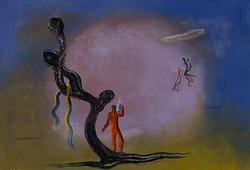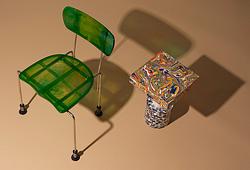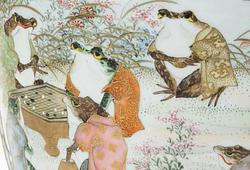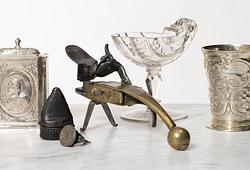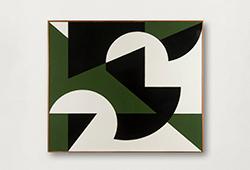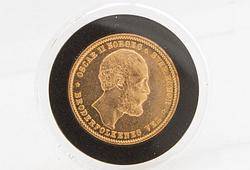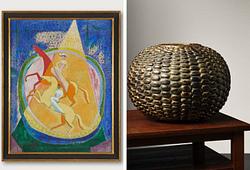Justiniano Asunción, tillskrivna
Folk/dräktskildringar från Manilla, Philipinerna.
En grupp bestående av 11 olika dräkt och folklivsskildringar. Färg med highlights i vitt, guld och gum på papper. Mått papper 23x35 cm.
Revor, fläckar, slitage.
Proveniens
Property of a private Swedish Estate.
Justiniano Asunción was a Filipino painter and politician.
Asunción was born into a prosperous Chinese Filipino family in the Santa Cruz district of Manila. He was one of six brothers, who were all renowned artists. The Asunción brothers operated an art studio and workshop.
In 1853, Asunción was elected cabeza de barangay (a municipal office) of his native Santa Cruz, which made him a member of the principalia ruling class working in cooperation with the Spanish government. This position gave him his alias Capitan Ting.
Asunción was known for the detailed realism, accuracy, and the three dimensional feel of his paintings. He painted life-sized pieces and miniature-sized works. He painted religious images, portraits, and tipos del pais (“types of the country”, native dress) paintings.
Asunción studied at the Escuela de Dibujo under Damián Domingo, whom we covered in part 18 of this series. Domingo established and popularized tipos del pais paintings for the foreign travelers’ market. When Domingo became too ill to continue these paintings, he passed the duty onto his pupil Asunció
Utställningar
Compare a set sold at Chrisites, 17 December 2017, lot 151, live auction 14237, Topographical pictures.
Övrig information
The women wear the traditional pares (the combination of skirts designed to satisfy the Catholic dress code), tapis (overskirt) covering the brightly coloured saya (long skirt). We also see examples of the delicate and transparent embroidered pañuelo (mantle), usually made from pineapple cloth, and worn over an opaque blouse. One wears a veil and others carries a silk umbrella. We also see a 'Manila Mestizo' (a local man of mixed Spanish, Chinese and Filipino descent) in Filipino dress. He wears a transparent embroidered striped shirt over an undershirt, a bowler hat (from England). Such local dandies and their attire fascinated nineteenth-century visitors to the colony: 'the shirts worn by the wealthy are often made of an extremely expensive home-made material, woven from the fibres of the pine-apple or the banana. Some of them are ornamented with silk stripes, some are plain. They are also frequently manufactured entirely of Jusi (Chinese floret silk), in which case they will not stand washing, and can only be worn once.' (F. Jagor, Travels in the Philippines, London, 1875, pp.31-2).




